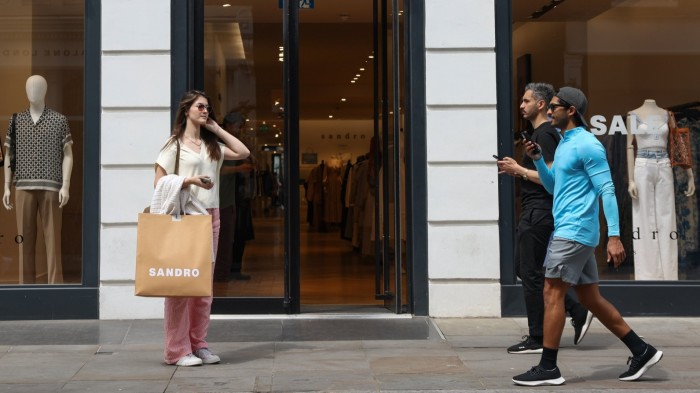Unlock the Editor’s Digest for free
Roula Khalaf, Editor of the FT, selects her favourite stories in this weekly newsletter.
UK household disposable income fell at its fastest rate in two years in the first quarter, potentially knocking one of Labour’s key economic targets off course.
Real household disposable income per head — the inflation-adjusted amount of income available for a household after taxes and subsidies — decreased 1 per cent in the first quarter, the steepest drop since the first quarter of 2023, according to figures from the Office for National Statistics published on Monday.
The decline compared with a 1.8 per cent expansion in the fourth quarter, the ONS said.
Last year, Prime Minister Sir Keir Starmer said the government would target household disposable income as a “milestone” for rating the success of his economic policies.
The squeeze on incomes comes as economic growth is expected to slow from the first quarter’s 0.7 per cent pace amid still high inflation, the impact of Donald Trump’s tariffs and a weakening jobs market.
Starmer is also facing political blowback over U-turns on winter fuel payments and welfare, which have left chancellor Rachel Reeves with a £4.25bn hole in her budget.
Matt Swannell, chief economic adviser to the EY Item Club, said that with earnings growth slowing and inflation set to rise, growth in real income “looks set to slow across the rest of this year”.
However, he noted that with households saving a little less, “there is space for consumption to be cushioned from this slowdown”.

The ONS confirmed on Monday that in the first quarter the UK economy grew at the fastest rate since the same period in 2024.
However, the detailed figures showed that rising wages were offset by an increase in taxes and a jump in inflation.
The proportion of disposable income that households save — the household saving ratio — decreased to 10.9 per cent in the first three months, down from 12 per cent in the previous three-month period, marking the first decline in two years.
Liz McKeown, ONS director of economic statistics, said: “The saving ratio fell for the first time in two years this quarter, as rising costs for items such as fuel, rent and restaurant meals contributed to higher spending.”
She pointed out that the ratio remained “relatively strong”, as it compares with an average of 5.5 per cent in the three years to 2019.
Sandra Horsfield, economist at Investec, said: “There would seem to be scope for further declines in future as lower interest rates, over time, encourage households to save less. This can act as a support to economic activity.”
The composition of growth in the UK has left the economy “looking a bit healthier”, according to Ruth Gregory, deputy chief economist at consultancy Capital Economics, as the expansion was less dependent on business investment and net trade, and more on household consumption.

Nevertheless, growth in the first three months was propelled by business activity being brought forward ahead of US tariffs, and by a one-off leap in spending on aircraft. “These sources of growth won’t be sustained,” Gregory said.
Separate monthly figures published earlier in June showed that the economy contracted by 0.3 per cent between March and April. Economists polled by Reuters forecast economic growth to slow to only 0.1 per cent in the second quarter.
Weakening real income growth, tightened fiscal policy and high global trade market volatility weigh on the UK economic outlook, said Swannell.
“After the strong start to 2025, the UK looks set for another year of weak growth, with headwinds continuing to intensify,” he said.







